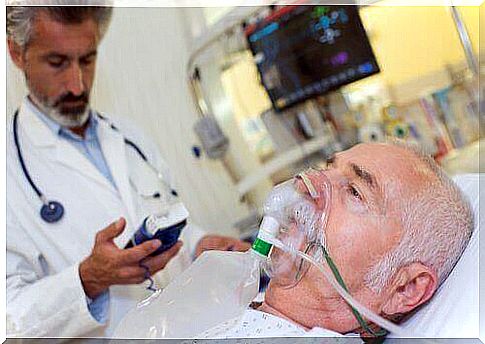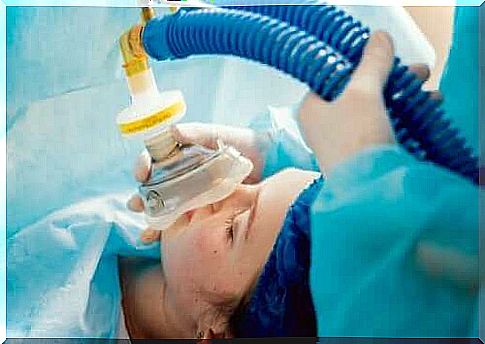Halotane: What Is Worth Knowing About This Substance?

Halothane must not be administered to patients who suffer from malignant hyperthermia. It should also not be used in people who are hypersensitive to this substance. Find out more about this anesthetic by reading the article below.
Halothane is a drug used by anesthetists to induce a patient under general anesthesia. It is an anesthetic that is administered in the form of a gas that the patient inhales to induce a rapid yet fluid loss of consciousness. It has a pleasant smell, has no color and does not irritate the mucous membranes.
In the 1950s and 1980s, doctors used this drug very often, both in children and adults. It was created in 1951 by scientist CW Suckling, and was first used as an anesthetic in 1956. It replaced other anesthetics used at the time, such as ether and cyclopropane.
However, in the 1980s, the use of halothane decreased drastically due to the introduction of new volatile anesthetics such as enflurane and isoflurane on the market. Although it is rarely used in developed countries these days, some third world countries still use it in veterinary procedures because it is quite cheap.
Dosing and administration
There are many different spraying systems on the market today that are used to deliver halothane. Some of them are open, semi-open or closed circuit systems. Doctors take turns using them because they are all just as good.

The dose of halothane depends on the individual characteristics of the patient. In most adults and older adults, doctors administer 2-4% halothane in oxygen / nitrous oxide to induce anesthesia. To maintain them, 0.5-2% halothane is used.
On the other hand, in children, doctors use a concentration of 1.5-2% to induce anesthesia and a concentration of 0.5-2% to hold it.
Contraindications to the use of halothane
Doctors cannot administer this drug to patients who have undergone malignant hyperthermia. In addition, it should not be administered to people who have been diagnosed with hypersensitivity to this agent. Moreover, if a patient develops clinical signs of unexplained jaundice and fever after administration of halothane, it should not be re-administered.
In addition, not enough research has been done to prove that this remedy is safe for use in pregnant and lactating women. Therefore, it is best to avoid volatile anesthesia during the first weeks of pregnancy.
Regarding breastfeeding women, there has not been enough controlled research into the use of halothane in this part of the population. Scientists have detected its presence in breast milk, but have not determined what effect it has on the baby.
In addition, people who drive cars or operate machinery must take into account that general anesthesia may prevent them from doing so. Despite all the contraindications listed above, doctors have used this anesthetic for over 30 years, and no significant consequences have been reported.
Side effect of halothane
Halothane, like all drugs, can have side effects. They lead to undesirable and unintended events that may affect the patient following administration.

It is worth mentioning that halothane can induce skeletal muscle hypermetabolism, which may eventually lead to malignant hyperthermia. Therefore, experts do not recommend giving it to patients with this disease.
These are not all side effects. It is also worth mentioning such problems as:
- Hypercapnia,
- Muscle stiffness
- Tachycardia
- Rapid breathing
- Heart arrhythmia.
Besides, it can also cause other health problems such as nausea, vomiting or liver problems. You can see for yourself that these symptoms are not typical. That is why you need to pay attention to the condition of the sick person. If any of these appear, halothane administration should be stopped immediately.
Summary
Halothane is a medical agent used by doctors in the form of a gas to induce or maintain anesthesia. If you have any questions about its use or general anesthesia, please consult your doctor or pharmacist.









